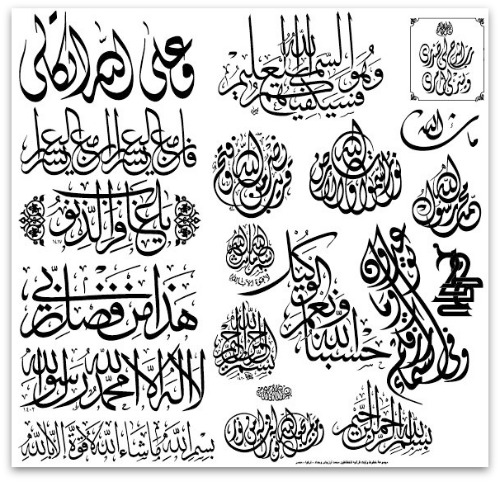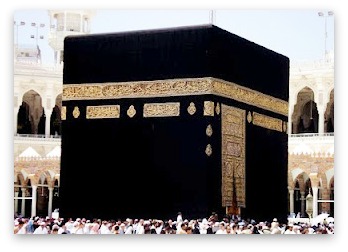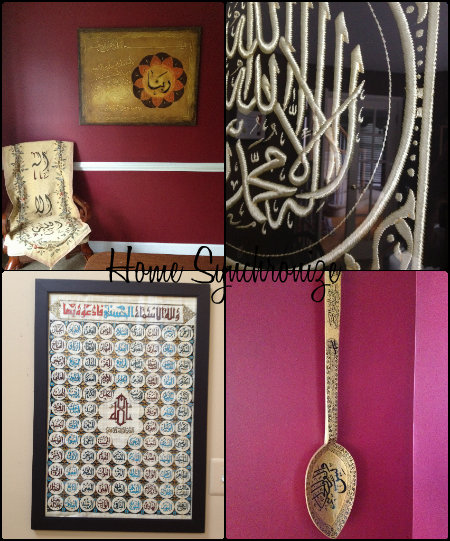Hi there everyone! My son is doing much better after his accident, thank God. The doctor has cleared him for school, even though I don’t feel comfortable with him going just yet! My husband wants me to relax and allow my son to return to normal life. That’s what I want to0……but gradually! Is that wrong? There was no point arguing with my husband about this after my son decided he wanted to return to school. And so, here I am feeling like a doctor on call just in case he needs to be picked up, and resisting the urge to call the school every hour to check on him !!! 🙁
I need to get my mind off of my son and turn this into a productive day. The best way I can think of is to return to blogging, especially to my new focus on Islamic interior design.
Remember my living room….
Can you pick out a unique form of art? Here is a close up….
You see those Arabic alphabets adorning each piece. That is Arabic Calligraphy. According to Islamic Art, Anthony Welch writes: “ Written from right to left, the Arabic script at its best can be a flowing continuum of ascending verticals, descending curves, and temperate horizontals, achieving a measured balance between static perfection of individual form and paced and rhythmic movement. There is great variability in form: words and letters can be compacted to a dense knot or drawn out to great length; they can be angular or curving; they can be small or large. The range of possibilities is almost infinite, and the scribes of Islam labored with passion to unfold the promise of the script”.
There are five different calligraphy styles; Naskh, Thuluth, Muhaqqaq, Nastaliq, and Riqa. In the example below, you can see a representation of each style in the phrase: Bissm Allah al Rahman al Raheem which means, in the Name of God the most gracious the most compassionate.
Notice how any one of these styles can be transformed into stunning art, that is both legible and visually pleasing.
Arabic Calligrpahy is also referred to as Islamic Calligraphy since it grew with the spread of the Qur’an (the Muslim Holy Book); which is written in Arabic alphabets. As I mentioned in my introductory post { Exploring Islamic interior design}, Muslims are prohibited from drawing figural images , so Muslim artists found in calligraphy a unique style to express their creativity. Below is an example of how Calligprahy is used to decorate the Kaba, the most sacred site to Muslims. {if you would like to learn more about the Kaba and why it is sacred to Muslims, Click here}
Here is a close up of calligraphy adorning the drape that is used to cover the Kaba. Gold thread is used to sew verses from the Quran onto the Kiswa or Kaba drape. Don’t you love that!! 
©2007-2012 ~naderbellal
The subject for Calligraphy is usually Islamic related through verses from the Qur’an and supplications. Below are a few of the accessories I own that are decorated with calligraphy.
……and the stenciled calligraphy art I created for the mudroom. I am very proud of this! 🙂
However, since calligraphy involves the Arabic alphabets, the subjects are endless. Here is one I found on the web that is fascinating. A flower of Arabic Alphabets! 🙂
As you can see, Islamic Calligraphy is a unique style of art that can be found in every muslim home {in some form or another}. They add character and interest to any room design.
So, what do you think of this style of art? Would you use it in your home?











[…] ceiling added height, increased spaciousness, and amplified sound. It was lavishly decorated with calligraphy, mosaics and arabesque patterns. It was […]